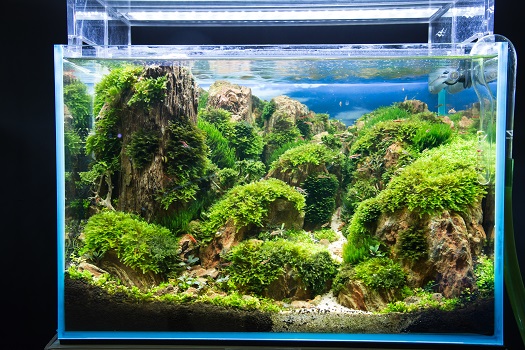- Your shopping cart is empty!
5 Tips for Taking Care of Freshwater Planted Aquariums

A freshwater planted aquarium can enhance your home’s look. Beyond aesthetics, plants assist in creating a natural ecosystem by improving water quality and reducing algae proliferation. Plants absorb carbon dioxide and nitrates from the water while producing oxygen, creating a healthy aquarium. If freshwater planted aquariums sound appealing, follow these tips for maintaining one.
1. Keep Ideal Water Parameters
Selecting the right sort of aquarium environment is crucial for plants to survive. Researching your aquarium’s water characteristics and choosing plants that can coexist within the same water ranges can reduce issues and help you maintain ideal water conditions. Three important water characteristics to keep in mind are temperature, hardness, and pH. Aquatic plants tend to thrive within the temperature range of 72 to 80 degrees, but there are a few that fall on the opposite end of this spectrum (but we’ll focus on this temperature zone), and plants can adapt to the water hardness found in places like Southern California.
2. Prune the Plants Regularly
Typically, plants grow rapidly and may eventually shade and outgrow the tank they’re in. The parts that outgrow the tank will decompose and die if they aren’t taken care of, which means pruning the plants will become necessary. A pair of pruning scissors will come in handy for cutting away excess plant parts. If this sort of maintenance doesn’t suit you, you could opt for slow-growing plants.
3. Clean the Water Weekly
A freshwater planted aquarium’s water must be regularly maintained. You’ll want to remove algae from the sides of your aquarium first. Siphon about 10 to 15 percent of the water, focusing especially on the tank’s gravel and hard decoration areas. Make sure to not disturb the roots of your plants. Put in fresh, dechlorinated water to replace the water you just siphoned. While siphoning, make sure you keep it above the substrate to avoid killing your plants. If you only clean the tank seasonally, it could negatively impact the aquarium’s ecosystem. A filtration system and diligent maintenance is a better alternative. If you really want to “step up your game,” try using reverse osmosis water—or better yet, deionized water. However, don’t forget to use a product called RO Right when doing water changes.
4. Use Fertilizer
Although fish waste naturally fertilizes plants, adding fertilizer like fluorite and a carbon source can really make a difference in plant growth and health. Even better, use nitrogen, potassium, phosphate, iron, and of course a carbon source like Excel. Root tabs are great for plants secured underneath the substrate, whereas liquid fertilizer is better for plants that aren’t anchored under the substrate, such as those fastened to rocks.
5. Install Proper Lighting
Plants cannot survive without the right lighting, as they depend on light for photosynthesis. Photosynthesis provides plants with the energy the need to grow, and it also produces a source of oxygen for the aquarium’s fish. You should provide your plants with 10–12 hours of light each day, specifically full-spectrum LED lighting. More on lighting in another segment.
If you need help caring for your freshwater planted aquarium, reach out to Aquatic Warehouse, a leading provider of high-quality fish tank supplies. Stop by our shop in Kearny Mesa, or feel free to give us a call at 858-467-9297.
